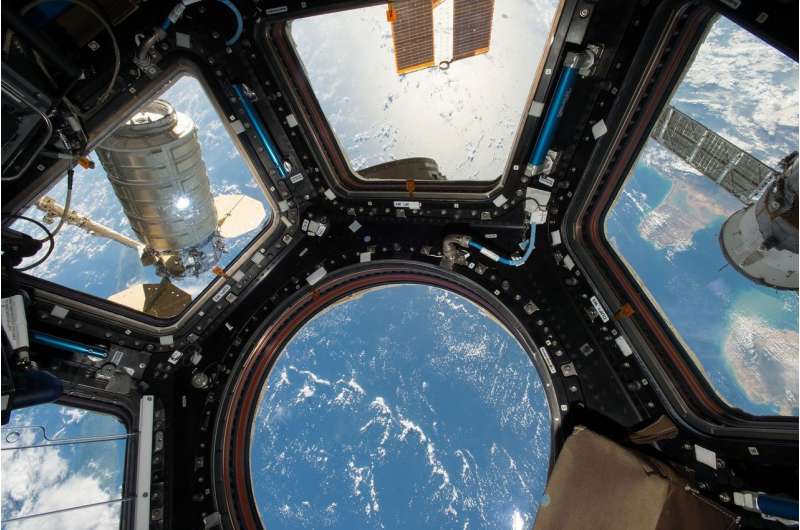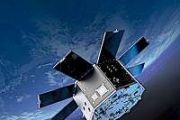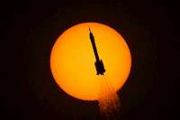
Copernical Team
Amyloid fibrils experiment operating aboard International Space Station

A novel experiment aimed at studying the mechanics of amyloid fibrils—a type of protein aggregation associated with diseases like diabetes, Alzheimer's, and Parkinson's—started today aboard the International Space Station (ISS), led by a team at Rensselaer Polytechnic Institute.
The project was designed by Amir Hirsa, a professor of mechanical, aerospace, and nuclear engineering at Rensselaer and member of the Center for Biotechnology and Interdisciplinary Studies (CBIS). He was looking for a way to study fluid dynamics without interference from the solid walls of a container, which would typically be necessary to hold a fluid being studied on Earth.
The concept, which Hirsa calls a ring-sheared drop, requires a microgravity environment, like the one found in orbit, where surface tension alone can hold a drop of liquid together. This will allow researchers to observe the effects of stress on protein—in this case: insulin.
"We're trying to understand this particular form of protein aggregation," Hirsa said. "And we're trying to remove the complication of wall nucleation."
The ring-sheared drop hardware—built by NASA and its contractors, and inspired by Hirsa's concept—includes a syringe that dispenses a large drop of liquid made up of water and dissolved insulin.
Watch Vega launch live

Tune in to ESA Web TV from 02:37 BST / 03:37 CEST on 17 August to watch the Vega launch live.
Best of both worlds-combining classical and quantum systems to meet supercomputing demands
Boeing to remove Starliner from rocket, months-long delay expected
 Boeing announced Friday that it has to send its troubled CST-100 Starliner capsule to a factory for repairs, delaying an unmanned test flight to the International Space Station (ISS) for several months.
The spacecraft had been due to launch from Cape Canaveral, Florida, on August 3 on an Atlas V rocket built by United Launch Alliance but the flight was delayed because of problems with four p
Boeing announced Friday that it has to send its troubled CST-100 Starliner capsule to a factory for repairs, delaying an unmanned test flight to the International Space Station (ISS) for several months.
The spacecraft had been due to launch from Cape Canaveral, Florida, on August 3 on an Atlas V rocket built by United Launch Alliance but the flight was delayed because of problems with four p Business growth scheme open to next group of space entrepreneurs
 A pioneering programme to help firms find their place in space has given a total of 31 businesses a 900,000 pounds boost and created new jobs - and the search is now on to find the next group of entrepreneurs.
Twenty businesses will be supported on the next phase of the Leo Programme, a free six-month accelerator run by the UK Space Agency and powered by Entrepreneurial Spark, where they w
A pioneering programme to help firms find their place in space has given a total of 31 businesses a 900,000 pounds boost and created new jobs - and the search is now on to find the next group of entrepreneurs.
Twenty businesses will be supported on the next phase of the Leo Programme, a free six-month accelerator run by the UK Space Agency and powered by Entrepreneurial Spark, where they w Traces of Ceres' icy crust found at Occator Crater
 Anomalies in the distribution of hydrogen at Occator crater on the dwarf planet Ceres reveal an icy crust, says a new paper led by Tom Prettyman, a Senior Scientist at the Planetary Science Institute.
The evidence comes from data acquired by the Gamma Ray and Neutron Detector (GRaND) aboard NASA's Dawn spacecraft. A detailed map of the concentration of hydrogen in the vicinity of Occator w
Anomalies in the distribution of hydrogen at Occator crater on the dwarf planet Ceres reveal an icy crust, says a new paper led by Tom Prettyman, a Senior Scientist at the Planetary Science Institute.
The evidence comes from data acquired by the Gamma Ray and Neutron Detector (GRaND) aboard NASA's Dawn spacecraft. A detailed map of the concentration of hydrogen in the vicinity of Occator w On chaos, drunks and a solution to the chaotic three-body problem
 The three-body problem is one of the oldest problems in physics: it concerns the motions of systems of three bodies, like the Sun, Earth and the Moon - how their orbits change and evolve due to their mutual gravity. The three-body problem has been a focus of scientific inquiry ever since Newton.
When one massive object comes close to another, their relative motion follows a trajectory dict
The three-body problem is one of the oldest problems in physics: it concerns the motions of systems of three bodies, like the Sun, Earth and the Moon - how their orbits change and evolve due to their mutual gravity. The three-body problem has been a focus of scientific inquiry ever since Newton.
When one massive object comes close to another, their relative motion follows a trajectory dict NASA, Boeing to Move Starliner to Production Facility for Propulsion System Evaluation
 NASA and Boeing have decided to postpone the launch of Orbital Flight Test-2 to the International Space Station as teams continue work on the CST-100 Starliner propulsion system.
Engineering teams have been working to restore functionality to several valves in the Starliner propulsion system from inside United Launch Alliance's Vertical Integration Facility that did not open as designed du
NASA and Boeing have decided to postpone the launch of Orbital Flight Test-2 to the International Space Station as teams continue work on the CST-100 Starliner propulsion system.
Engineering teams have been working to restore functionality to several valves in the Starliner propulsion system from inside United Launch Alliance's Vertical Integration Facility that did not open as designed du DART Gets Its Wings: Spacecraft Integrated with Innovative Solar Array Technology and Camera
 Perched atop a stand in the middle of a high-ceilinged clean room, DART is beginning to look like the intrepid spacecraft that will aim itself directly into an asteroid next fall. With the addition of its compact Roll-Out Solar Arrays (ROSA) coiled into two gold cylinders that flank the sides of the spacecraft, and its less visible but still integral imager, the Didymos Reconnaissance and Astero
Perched atop a stand in the middle of a high-ceilinged clean room, DART is beginning to look like the intrepid spacecraft that will aim itself directly into an asteroid next fall. With the addition of its compact Roll-Out Solar Arrays (ROSA) coiled into two gold cylinders that flank the sides of the spacecraft, and its less visible but still integral imager, the Didymos Reconnaissance and Astero Purdue-designed heat transfer experiment arrives at International Space Station
 People who design spacecraft must prioritize two factors: reducing weight and managing extreme temperatures.
A new experiment designed by Purdue University engineers addresses both problems. The Flow Boiling and Condensation Experiment (FBCE), which arrived at the International Space Station on Thursday (Aug. 12), will soon advance the science of heat transfer in microgravity.
"Vehic
People who design spacecraft must prioritize two factors: reducing weight and managing extreme temperatures.
A new experiment designed by Purdue University engineers addresses both problems. The Flow Boiling and Condensation Experiment (FBCE), which arrived at the International Space Station on Thursday (Aug. 12), will soon advance the science of heat transfer in microgravity.
"Vehic 
































